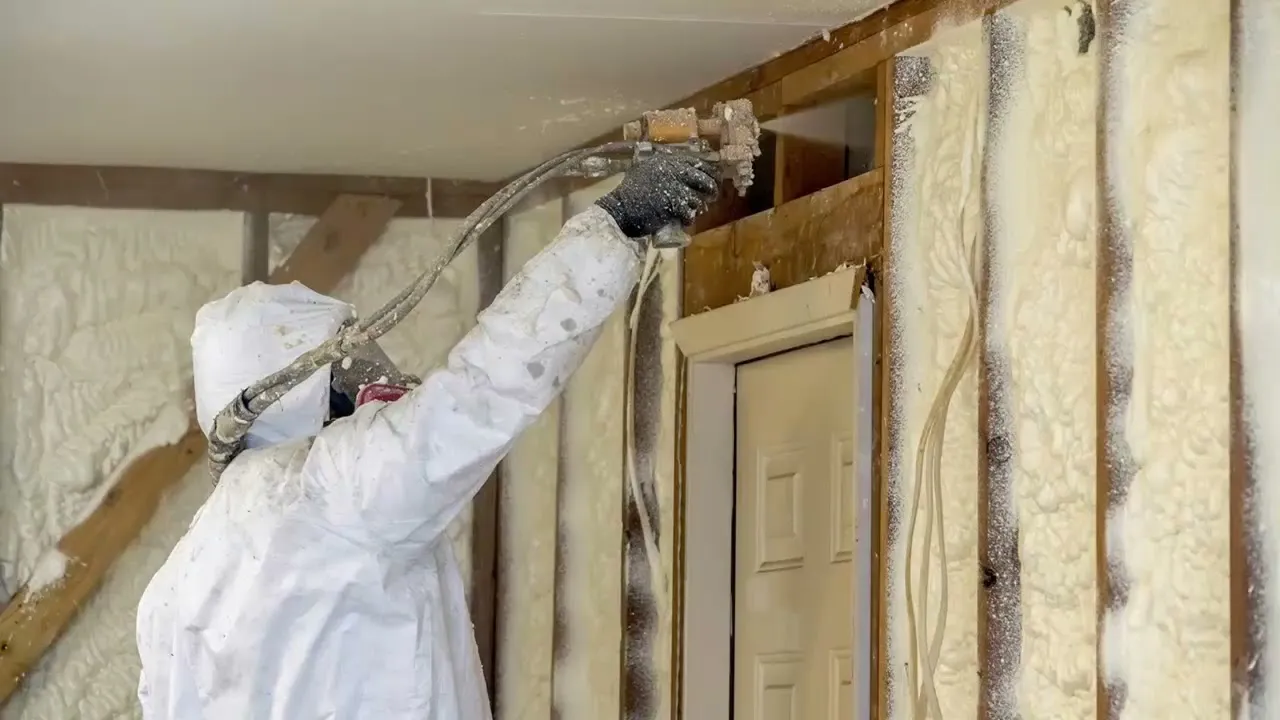Understanding the Right Thickness for Energy Efficiency
Spray foam insulation plays a key role in reducing energy costs, improving indoor comfort, and enhancing the overall efficiency of a home or commercial building. The right thickness is essential to achieve optimal insulation performance, as both under-insulating and over-insulating can impact energy savings and cost-effectiveness.
Types of Spray Foam and Their Ideal Thickness
Open-Cell vs. Closed-Cell Spray Foam
Before determining the ideal thickness, it is important to understand the two main types of spray foam insulation:
- Open-Cell Spray Foam: A lighter, more flexible material that provides excellent air sealing while allowing some moisture permeability.
- Closed-Cell Spray Foam: A denser, more rigid foam with higher insulation value and moisture resistance.
Each type requires different application thicknesses to achieve peak performance.
Recommended Thickness for Maximum Energy Savings
Open-Cell Spray Foam
- Walls: 3 to 3.5 inches
- Attics: 6 to 10 inches
- Crawl Spaces: 3 inches
Open-cell foam achieves its optimal insulation performance at around 3 to 3.5 inches in walls, beyond which additional layers have diminishing returns.
Closed-Cell Spray Foam
- Walls: 2 inches
- Attics: 4 to 5 inches
- Crawl Spaces: 2 inches
Closed-cell spray foam provides more insulation per inch, meaning less material is required to achieve strong energy savings.
Factors That Affect Spray Foam Thickness
Building Codes and Regulations
Local building codes set minimum insulation requirements, which vary based on climate zone. In colder regions, thicker applications may be necessary to meet R-value standards.
Climate and Environmental Conditions
Homes in extreme climates (hot or cold) benefit from thicker spray foam applications to counteract high heat loss or gain.
Structural Considerations
For retrofit projects, existing wall cavities and roofing structures may limit the thickness of spray foam that can be applied.
Why the Right Thickness Matters
Energy Cost Reduction
Spray foam acts as both an insulator and air barrier, reducing energy waste and leading to lower utility bills.
Moisture and Air Sealing
The right thickness prevents air leaks and moisture buildup, reducing the risk of mold growth and structural damage.
Long-Term Durability
Properly applied spray foam with the correct thickness ensures longevity and minimizes future maintenance costs.
Common Misconceptions About Spray Foam Thickness
“More is Always Better”
Beyond a certain thickness, additional spray foam provides diminishing insulation benefits while increasing costs.
“Any Thickness Provides an Air Seal”
While even a thin layer of closed-cell foam improves air sealing, achieving an effective barrier requires sufficient thickness.
“Spray Foam Alone is Enough”
In some cases, combining spray foam with other insulation methods, such as fiberglass batts or rigid foam, enhances energy efficiency.
Ensuring Proper Installation
Professional Application vs. DIY
While DIY kits exist, professional installation ensures the correct application thickness and adherence to building codes.
Verifying Thickness and Performance
Using an infrared thermal camera or blower door test helps confirm that the insulation is applied correctly and achieving the desired efficiency.
Choosing the Right Insulation for Your Needs
The best spray foam thickness depends on your specific insulation goals, budget, and building requirements. Consulting an experienced insulation contractor ensures the most cost-effective and energy-efficient solution.
Get Expert Advice
For professional guidance on the best spray foam thickness for your home or business, contact R-Factor Spray Foam at (352) 663-5905 or email [email protected].
Frequently Asked Questions
1. What happens if spray foam is too thin?
A thin application may not provide effective insulation, leading to air leaks, poor temperature control, and higher energy costs.
2. Can spray foam be too thick?
Excessive thickness can lead to uneven curing, wasted material, and unnecessary costs without significant energy-saving benefits.
3. How does spray foam thickness impact R-value?
The R-value increases with thickness, but after a certain point, additional layers offer diminishing returns.
4. Is open-cell or closed-cell spray foam better for walls?
Closed-cell foam provides a higher R-value and better moisture resistance, while open-cell is more cost-effective and flexible.
5. Does spray foam thickness vary by climate zone?
Yes, colder climates require thicker applications to meet energy efficiency standards.
6. Can I apply spray foam in multiple layers?
Yes, applying in layers allows for proper expansion and curing, ensuring better insulation performance.
7. How do I measure spray foam thickness?
Thickness can be checked using a depth gauge or by measuring test areas after application.
8. Will spray foam thickness affect indoor air quality?
Properly installed spray foam improves air quality by reducing drafts and moisture infiltration.
9. What is the lifespan of spray foam insulation?
When correctly applied, spray foam insulation lasts 30+ years with minimal maintenance.
10. How do I know if my spray foam is working effectively?
A home energy audit or thermal imaging test can confirm whether the insulation is performing as expected.


